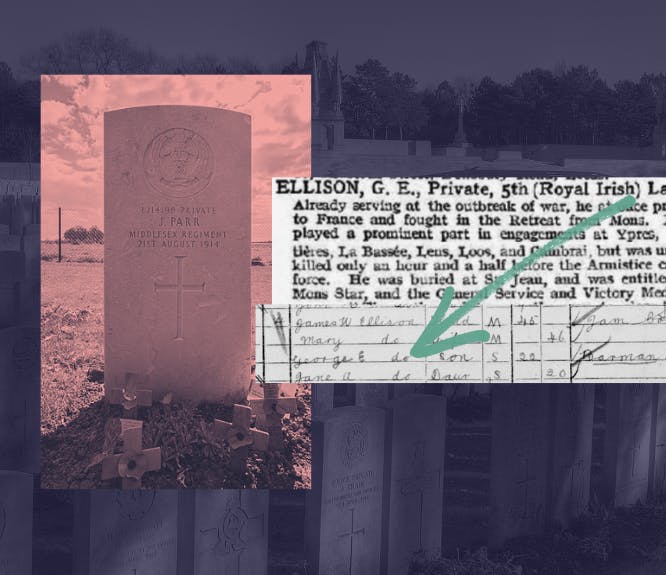The incredible true story behind The Ministry of Ungentlemanly Warfare
9-10 minute read
By Ellie Ayton | April 3, 2024
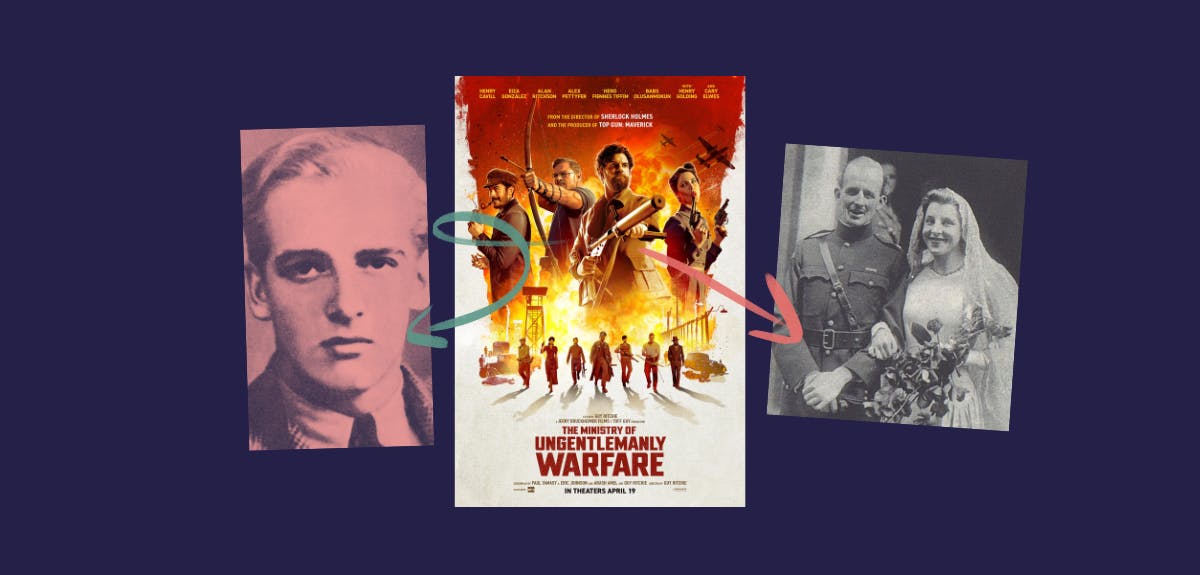
Guy Ritchie’s film The Ministry of Ungentlemanly Warfare sees an all-star cast - including Henry Cavill, Cary Elwes, and Henry Golding - team up to battle the Nazis in World War Two. But is the film based on a true story from history?
This Guy Ritchie WW2 blockbuster is based on the 2014 book Churchill’s Secret Warriors: The Explosive Story of the Special Forces Desperadoes of WWII by Damien Lewis. The cast includes Henry Cavill as Gus March-Phillips, Alan Ritchson as Anders Lessen, Alex Pettyfer as Geoffrey Appleyard, and Freddie Fox as Ian Fleming of James Bond fame.
Like the similar SAS: Rogue Heroes (the BBC historical drama which depicts the origins of the Special Air Service) The Ministry of Ungentlemanly Warfare showcases the covert military operations during the Second World War.
But how much of the film is fact, and how much is fiction?
The true story behind The Ministry of Ungentlemanly Warfare
At the beginning of WW2, Winston Churchill hoped to change the course of the war by using more ‘irregular warfare’ - in effect, this was the birth of black ops. He formed the Special Operations Executive (SOE), also known as Churchill’s Secret Army. It began to carry out espionage, sabotage, and reconnaissance.

Search for stories in our newspapers and publications
Explore millions of digitised pages of newspapers and other publications from our British and Irish collections, dating as far back as the 1700s.
One of the SOE’s commandos was the Small Scale Raiding Force (SSRF), No.62 Commando. Specially ordered by Churchill, they were to ‘develop a reign of terror down the enemy coast’.
The Ministry of Ungentlemanly Warfare is a fictionalised portrayal of one of the SSRF’s most daring real-life missions – Operation Postmaster.
What was Operation Postmaster?
This was the first mission of the SSRF, where the team boarded German and Italian ships in the harbour of Fernando Po (now Bioko, off West Africa) on 14 January 1942. Working with the SOE, their plan was to steal these Axis vessels and sail them to Lagos.
The raid was politically controversial and was considered a breach of Spanish neutrality – Fernando Po was a Spanish colony. Major Gus March-Phillips and five other men left Poole Harbour on 9 August 1941 aboard Maid of Honour. The rest of the SSRF had departed earlier under the command of Geoffrey Appleyard.
The press of the time didn’t know what to make of the events – it was denied by the Free French, and the British government initially stated there were no British vessels in the area at the time.
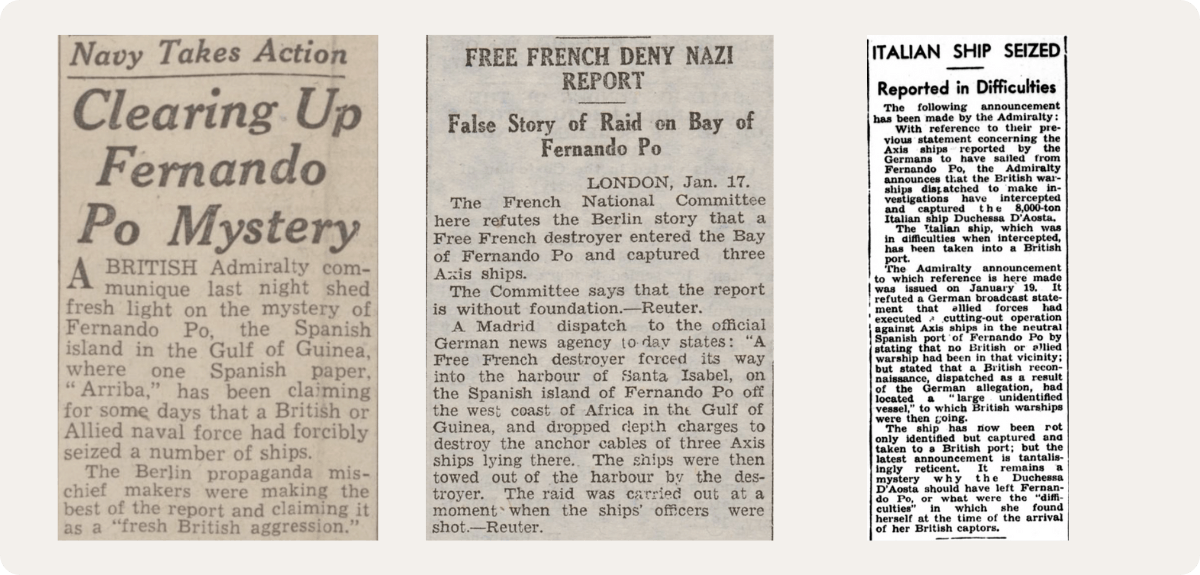
Contemporary newspaper reports on Operation Postmaster, in Aberdeen Press and Journal, 20 January 1942; The Civil & Military Gazette, 18 January 1942; Gloucester Citizen, 26 January 1942.
A report in the Civil & Military Gazette stated that ‘a Free French destroyer forced its way into the harbour of Santa Isabel, on the Spanish island of Fernando Po off the west coast of Africa in the Gulf of Guinea and dropped depth charges to destroy the anchor cables of three Axis ships lying there. The ships were then towed out of the harbour by the destroyer.’
Except, it wasn’t the Free French.
Just 30 minutes passed between the beginning and the end of the raid, without any losses to the raiding party, as the ship’s officers were at an event arranged by an SOE agent.
Now, let’s meet the daring, real-life figures who took part in the raid and inspired characters in The Ministry of Ungentlemanly Warfare.
Who was Gus March-Phillips?
The film’s lead character, Gus March-Phillips, is played by British actor Henry Cavill, star of The Witcher and Superman. Gus was a real person, born Gustavus Henry March-Phillips in London in 1908. He was the founder of No. 62 Commando.
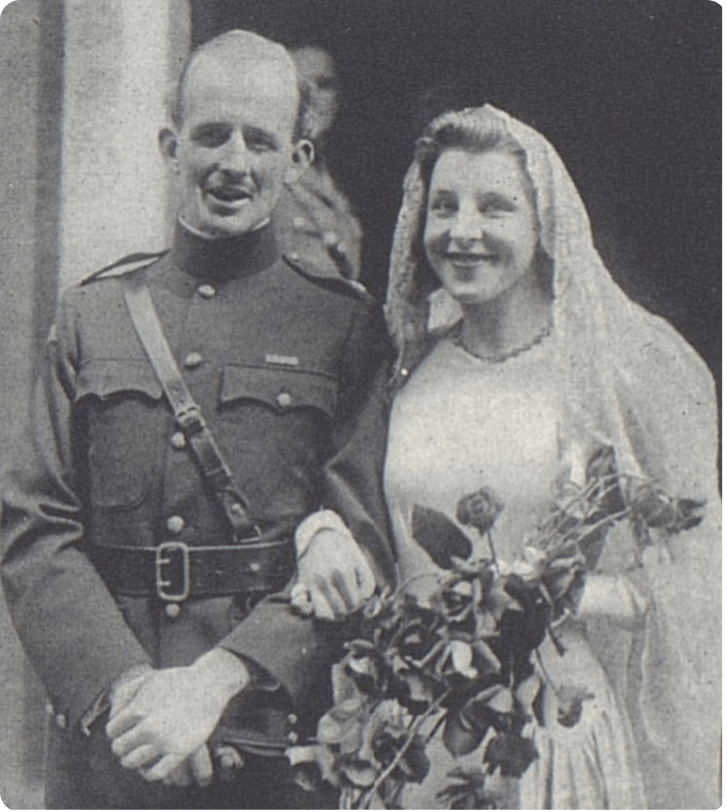
The wedding of Gus March-Phillips and Marjorie Stewart, pictured in The Tatler, 6 May 1942.
Gus married his wife, Marjorie Stewart, in Westminster in 1942 – just a few months after the events of Operation Postmaster.
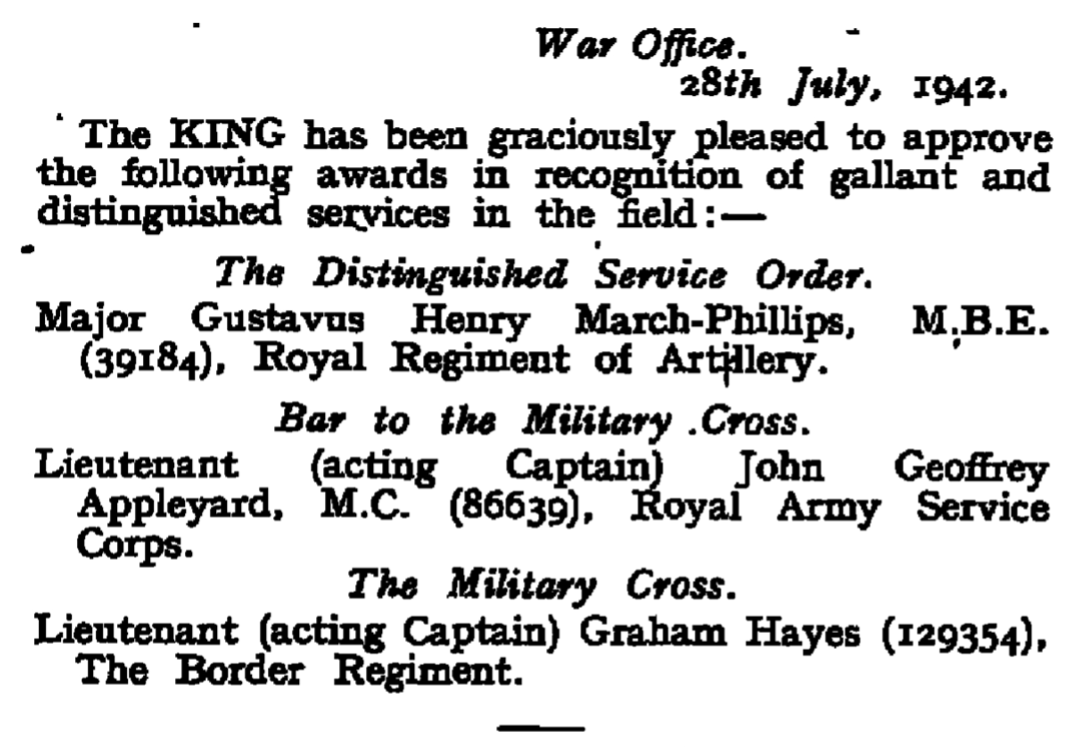
Gus' Distinguished Service Order.
Gus was awarded the Distinguished Service Order by the King in 1942, on the same day Geoffrey Appleyard was awarded the Bar to the Military Cross, and Graham Hayes was awarded the Military Cross, found in the London Gazette. Despite his success with the SSRF, Gus died later that year during Operation Aquatint in September 1942.
"Major March-Phillips was responsible for the original conception of the SSRF and was its first Commander. He formed and trained the force, and due to his energy and personality the force was ready for its first operation within six weeks of the directive authorising the formation of the force being signed."
The raid saw Gus and his team land on the wrong part of a beach on the German-occupied French coastline, and they were found by a heavily armed patrol. He’d tied to get away but seemed to die in his attempt. Without Gus, the SSRF might have never been formed, or may never have seen the success that it did, as seen in the quote above from his Distinguished Service Order.
Who was Marjorie Stewart?
Eiza González plays Marjorie Stewart in The Ministry of Ungentlemanly Warfare, who married Gus March-Phillips in 1942. She was the daughter of Sir Frances Stewart, and she appeared in the 1921 Census with her siblings in Sussex.
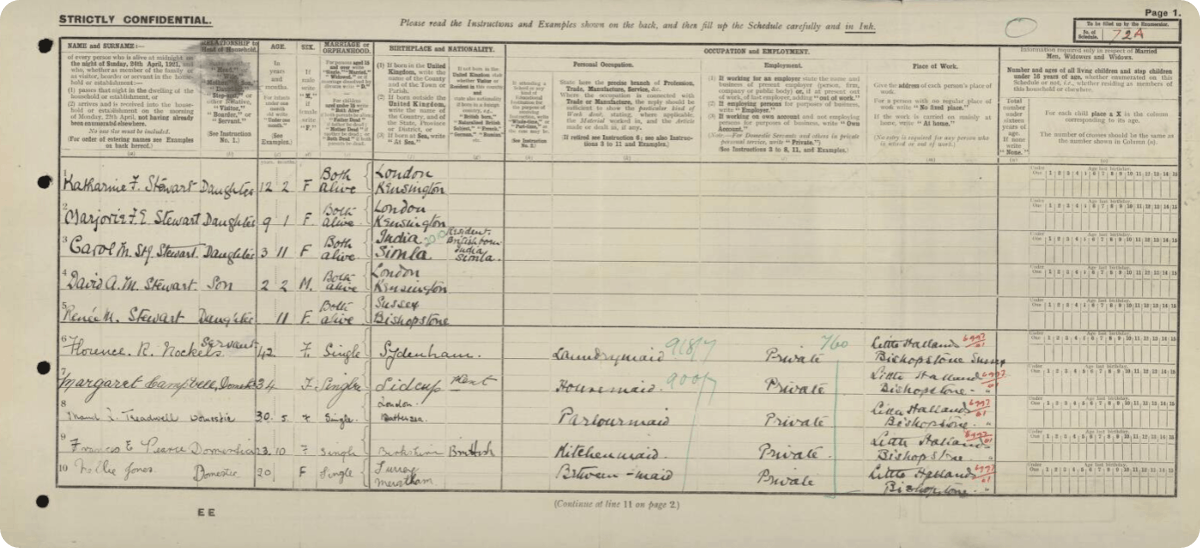
Marjorie Stewart aged 9 in the 1921 Census.
Marjorie later became an actress, starring in West End plays despite not coming from a 'stage family, but made her theatrical debut at the age of five'.
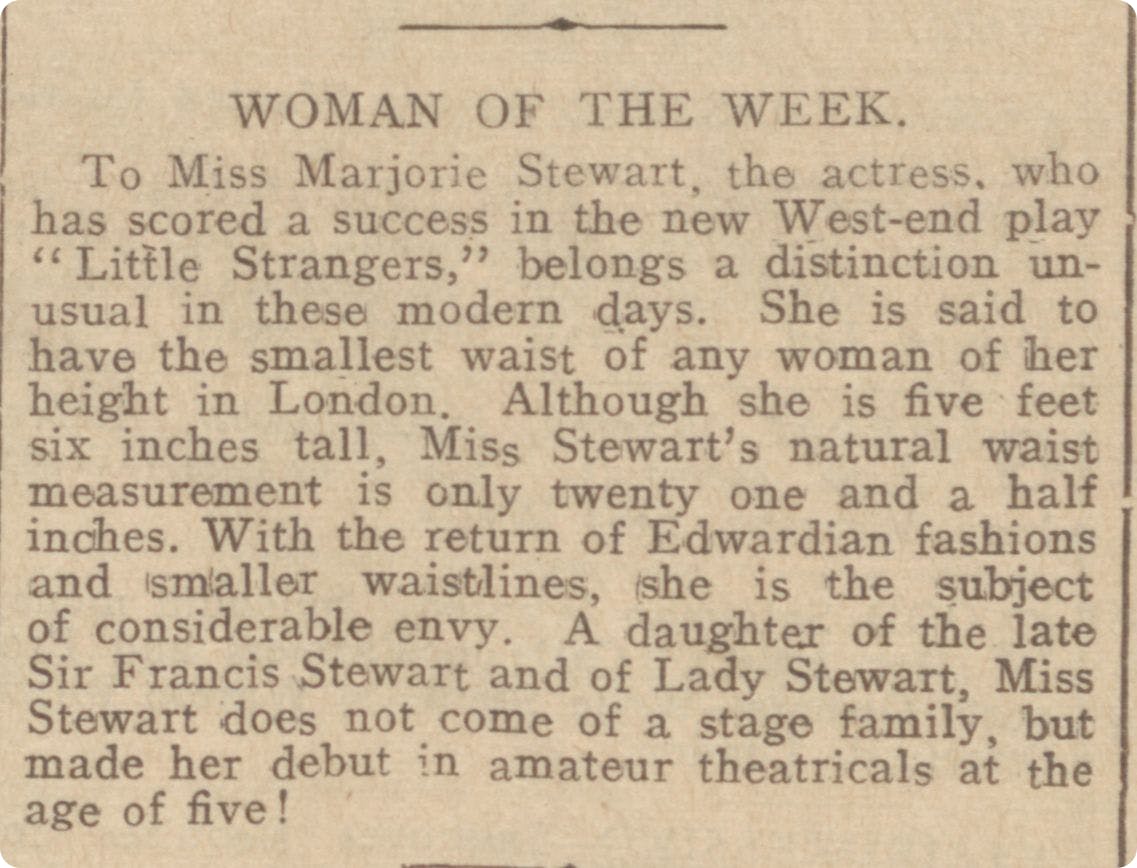
Marjorie Stewart mentioned in the Wells Journal, 5 August 1938.
It's said by some Marjorie was also a Special Operations Executive agent during the Second World War, or at the very least she was secretary to Patrick Howarth, another SOE operative.
Who was Anders Lassen?
Denmark-born Anders Lassen, born in 1920, was the only non-Commonwealth recipient of the Victoria Cross in WW2. While serving with the Danish Merchant Navy, he came to England and joined No.62 Commandos. He’s played by Reacher star Alan Ritchson in The Ministry of Ungentlemanly Warfare.
He was awarded the Military Cross for his part in Operation Postmaster. Anders was later a member of 2nd SAS under the command of Bill Stirling (brother of David Stirling, founder and creator of the Special Air Service, or the SAS). He rose to the rank of major, fighting in Europe, Africa and beyond.
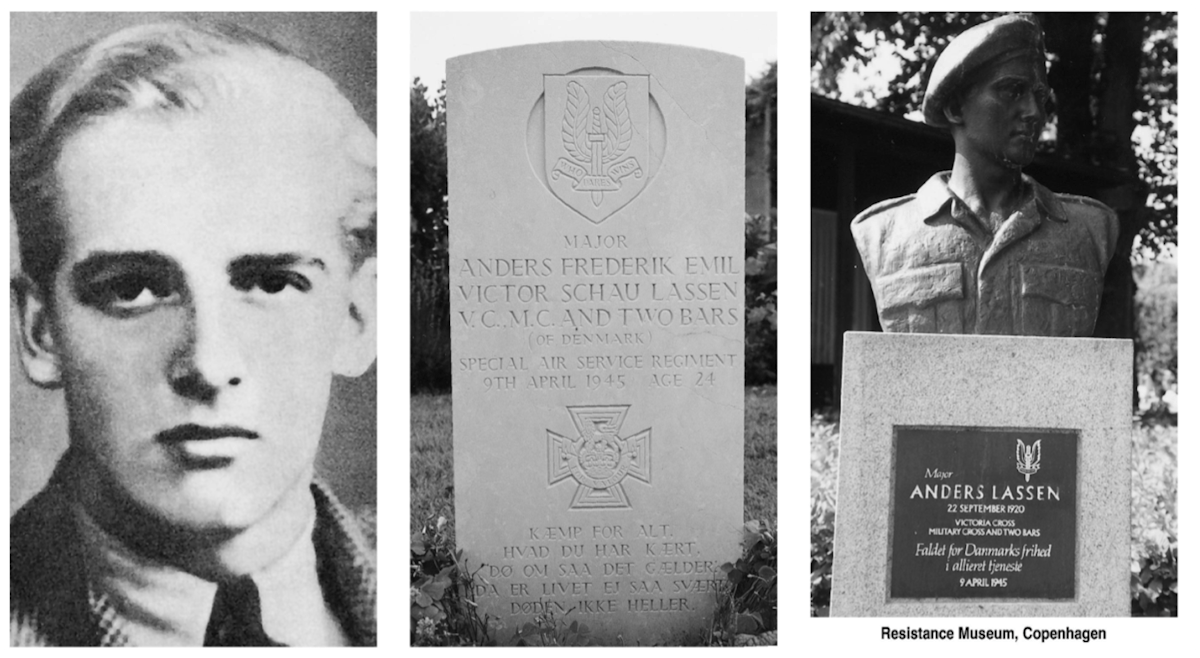
Anders Lassen in Victoria Cross Recipients, which shows a photograph, his headstone, and a memorial.
He died in Italy on 9 April 1945 during Operation Roast. He’d been tasked with causing casualties and confusion around fortified enemy pill boxes along the north shore of Lake Comacchio to give the impression of a major landing. In the face of overwhelming numbers, he managed to fulfil the mission and wipe out three positions until he was mortally wounded.
Anders refused medical aid so the withdrawal of his team would not be hindered, and they could be evacuated safely. He was 24 years old when he died and was posthumously awarded the Victoria Cross for his bravery.
Who was Geoffrey Appleyard?
John Geoffrey Appleyard was born in 1916. His parents were John Ernest Appleyard, a motor engineer, and Mary Elizabeth Northrop. In the 1921 Census, we find him and his family in Ulverston in Lancashire, visiting a farmer named Isaac Wilson.
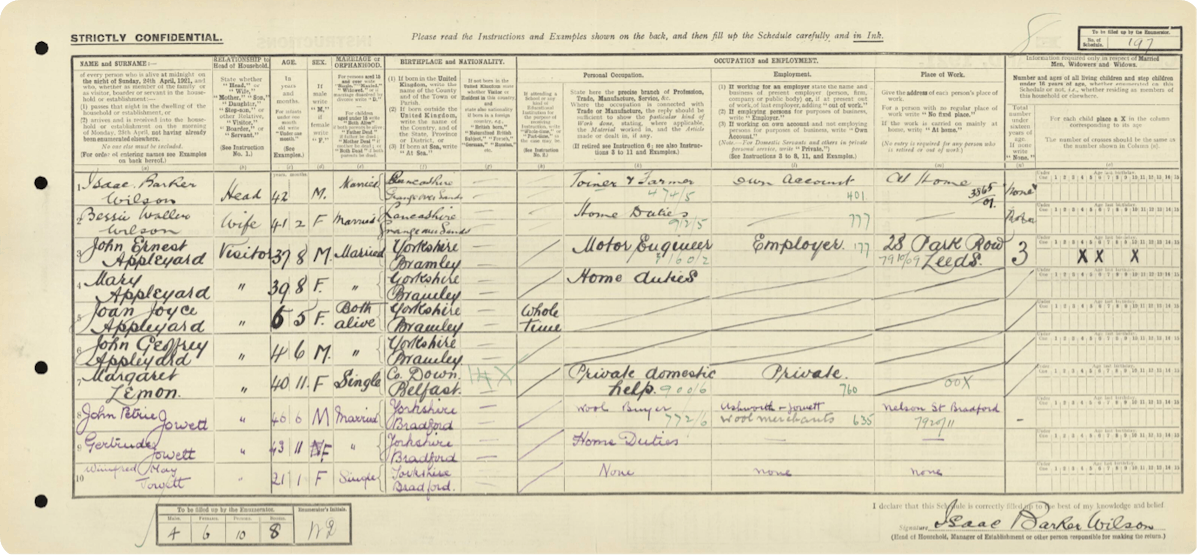
Geoffrey Appleyard in the 1921 Census. You can view the full record here.
He’s portrayed by English actor Alex Pettyfer in The Ministry of Ungentlemanly Warfare. Newspapers of the time reported Appleyard to be an ‘all-around athlete and an expert skier’.
Initially in the Royal Army Service Corps and later in the British Expeditionary Force, Appleyard volunteered for the Commandos in late 1940. As in the film, he took part in Operation Postmaster in early 1942.
Other operations followed Postmaster, such as Operation Basalt (which angered Adolf Hitler so much he reportedly declared all captured Commandos to be shot). Appleyard received the Distinguished Service Order in December 1942, only two weeks after heading to Buckingham Palace for the Bar on his Military Cross. It meant a second visit to King George VI in two weeks.

Appleyard received a D.S.O, in the Yorkshire Post and Leeds Intelligencer, 17 December 1942.
It’s not known exactly how Appleyard died. During the Allied Invasion of Sicily in July 1943, he was reportedly supervising some SAS paratroopers being dropped in Operation Chestnut. He was never heard from again, and was declared as ‘missing, presumed dead’. He was 26 years old.
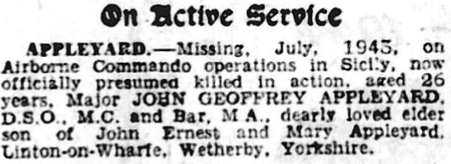
Yorkshire Post, 9 March 1944.
A few years after WW2 ended, a longer obituary appeared in the press as part of promotion of a book.
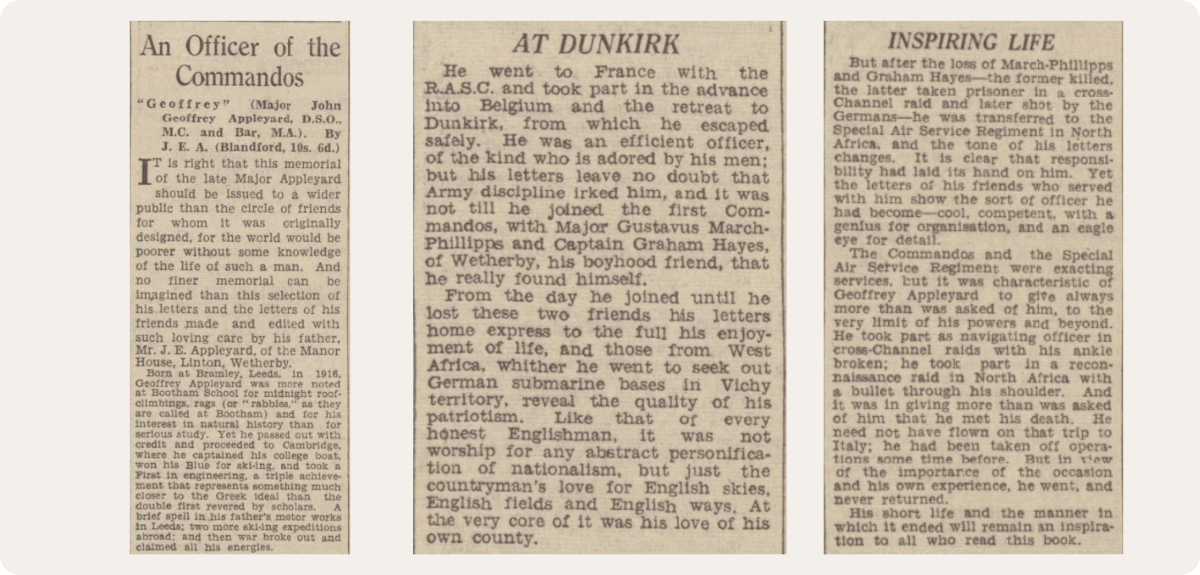
A tribute to Geoffrey, published some years after his death in the Yorkshire Post and Leeds Intelligencer, 21 April 1947.
It states that Graham Hayes, another No.62 Commando, was his boyhood friend.
Who was Graham Hayes?
Graham Hayes was born in Yorkshire in 1914 to parents Herbert and Lilian. His character in The Ministry of Ungentlemanly Warfare is named Henry Hayes, and he's portrayed by Hero Fiennes Tiffin. Following Postmaster, Hayes was awarded the Military Cross.
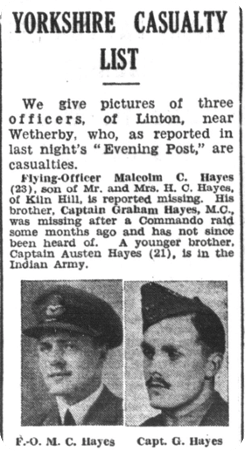
Hayes and his brother Malcolm were both reported missing in 1942, pictured in the Yorkshire Evening Post, 23 February 1943.
Like Gus, Hayes took part in the later Operation Aquatint. The mission didn’t go to plan, and Hayes was one of only four out of the 11-man team escape a German patrol in Normandy.
Hayes then went on the run, but was later betrayed and captured. He was held in solitary confinement for some nine months, before being executed by firing squad on 13 July 1943.
Who was Ian Fleming?
James Bond creator Ian Fleming also features in The Ministry of Ungentlemanly Warfare, played by Freddie Fox. Fleming was born in London in 1908 to Valentine Fleming (killed during World War One) and Evelyn Fleming née Rose.
Fleming worked for Britain’s Naval Intelligence Division during WW2 and oversaw two intelligence units – 30 Assault Unit (or No. 30 Commando) and T-Force. He also oversaw the distributing of intelligence to Royal Navy units ahead of Operation Overlord, or the D-Day Landings.
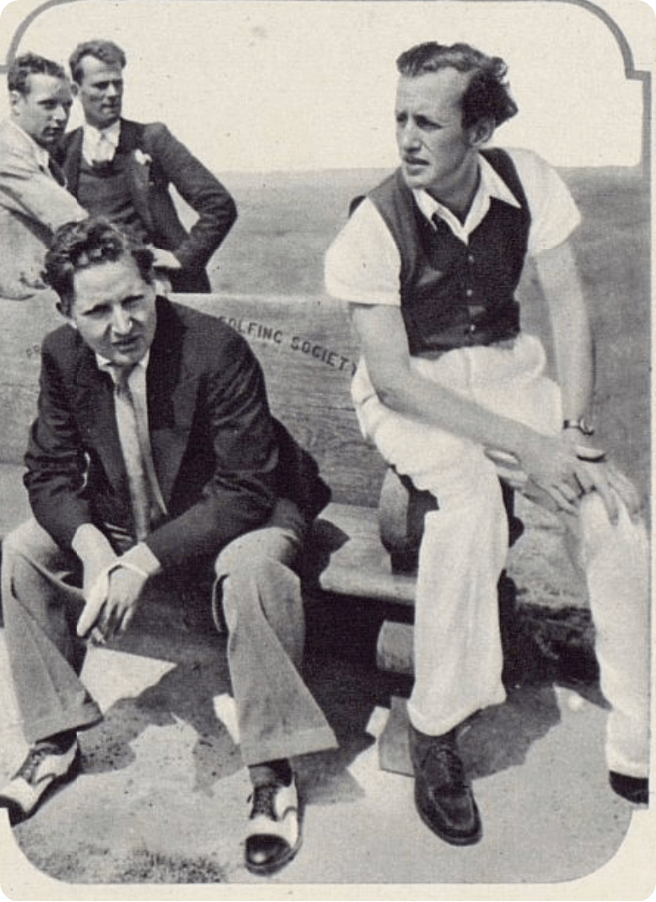
Ian Fleming (right) pictured with Kenneth Wagg in The Tatler, 6 July 1938.
He appears in the 1939 Register in London as a stockbroker but was marked as a lieutenant in the Admiralty.

Ian Fleming in the 1939 Register. You can view the full record here.
Fleming was in charge of Operation Goldeneye (yes, really) between 1941 and 1942, where he maintained an intelligence framework in neutral Spain, just in case the Nazis invaded.
Who was Colin Gubbins?
In the film, British actor Cary Elwes plays Brigadier Colin Gubbins. Born in Japan in 1896, he served in World War One and later during the Russian Civil War and Irish War of Independence, where he apparently developed an interest in irregular warfare. During the Second World War he became chief of the Special Operations Executive.
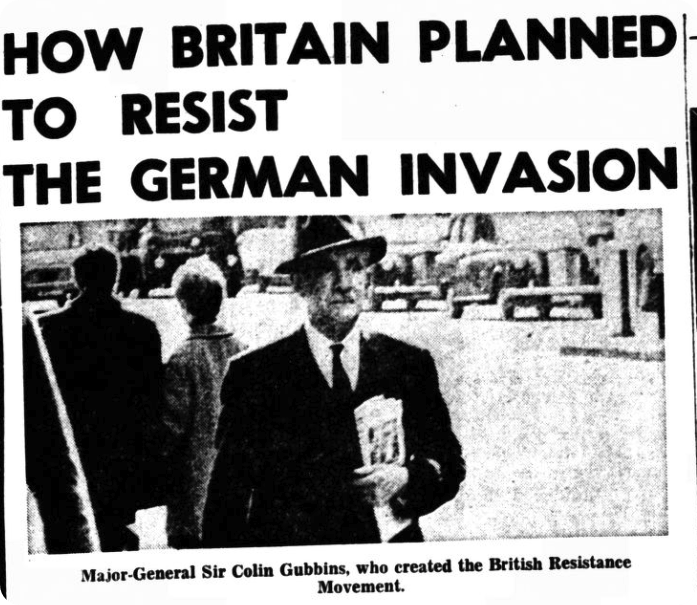
Colin Gubbins, pictured in the Belfast Telegraph, 26 June 1968.
Gubbins also set up secret Auxiliary Units based around the Home Guard, which would monitor the flanks and rear of any invading German army in the United Kingdom.
Do you have any WW2 heroes in your family tree? Head over to our History Hub to read more real-life stories.
Related articles recommended for you
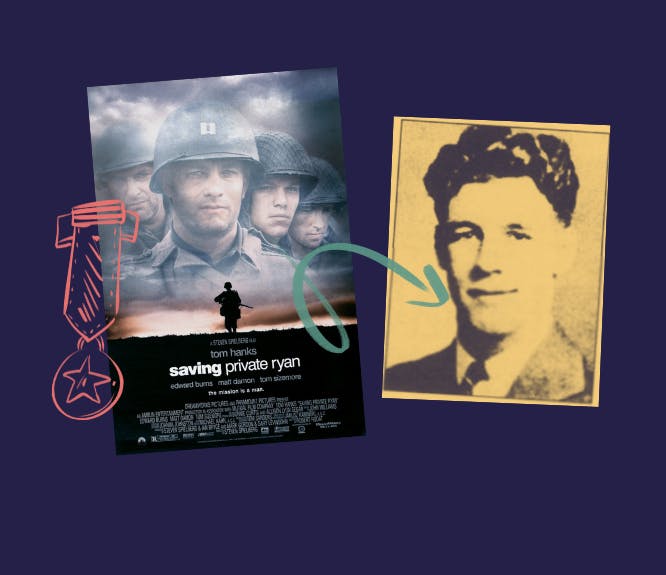
These are the nation’s favourite war stories – and the real history behind them
History Hub

Episode guide: A House Through Time series five
Discoveries
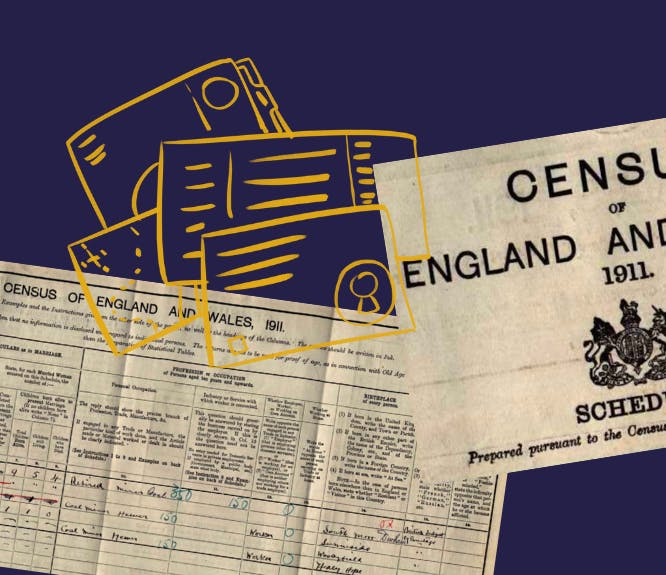
Seven surprising finds in the 1911 Census
Discoveries
